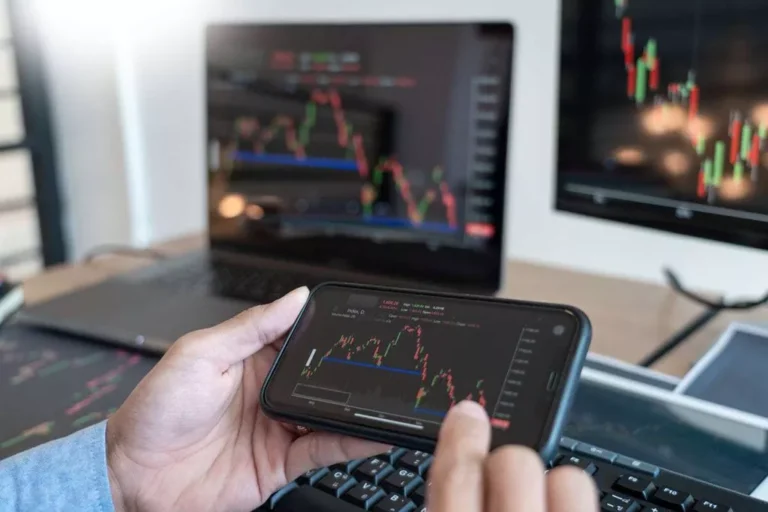However, if an investor does not want the fund manager to take too many decisions, needs the fund to easily map the benchmark, and does not wish to take a threat, then passively managed funds could presumably be thought-about. Before investing into energetic and passive funds, contemplate crucial components to align your investments together with your monetary goals. First and foremost, consider your financial aims and funding horizon, guaranteeing they align with the fund’s function.

In passively managed funds, the fund manager cannot decide the motion of the underlying assets. Active traders seek to outperform the market by frequently shopping for and promoting belongings. In distinction, passive investors mirror market performance, holding a diversified portfolio for long-term stability and seeking steady growth over time. In an ETF, the fund merely mirrors the movements of an index, set by entities like NSE or BSE, with investors having no say in asset selection or elimination. By investing in an index or benchmark, people commit to holding the funding for an extended period with out trying to predict or react to market fluctuations. Due to the minimal shopping for and selling of belongings, passive investing is acknowledged as a cheap technique.
Since actively managed funds undertake frequent buying and selling of securities, they have an inclination to have a better portfolio turnover. This may end up in greater capital gains distribution which may appeal to taxation although the investor has not bought the units of their fund. You should buy and promote these funds via online platforms, brokers, or fund homes. In order to not deviate from the benchmark index and preserve a low monitoring error, passively managed funds may be compelled to buy securities that are overvalued and promote securities which might be undervalued. This can end result in trading choices that might not maximise returns even if there may be the potential to take action. Due to energetic management by skilled fund managers, active funds have the potential to outperform the market.
Passive investing is safer, spreading threat throughout a market index, minimizing the impression of any single stock’s performance and counting on long-term market progress. Even if one were to see, US was a comparatively excessive growth financial system from 1970s-90s; sustainable wholesome development on a big base gave the opportunity for brand new sectors to emerge and develop. Despite the energy disaster in 1979, Vietnam warfare ( ), Black Monday in 1987 and lots of other such occasions – a larger proportion of active fund managers outperformed the benchmark. Prior to 1991 liberalization, the Index largely consisted of old economic system stocks flourishing during the License Raj.
2 Why Are Passive Funds Better Than Active Funds?
You can choose to purchase and hold a certain proportion of index funds and a few actively traded stocks in your portfolio to benefit from both approaches. Investors skilled in the stock market typically prefer an energetic funding technique to beat the benchmark. However, passive traders give attention to duplicating the benchmark efficiency and purpose for long-term stable returns. Passively managed funds monitor a selected market index and purpose to duplicate its performance.
Passive investing provides a cost-effective, lower-risk method with consistent market returns. Diversification is a key aspect to judge when comparing passive funds vs energetic funds, as every strategy can result in completely different ranges of exposure to various sectors and assets. Choosing between lively and passive mutual fund strategies relies on your danger appetite and financial objectives. If you are in search of high returns and have a higher threat tolerance, you can opt for active funds. On the opposite hand, if you are in search of a low-cost, low-risk funding strategy, you presumably can select passive funds.

For most retail traders, lively investing by themselves just isn’t possible both as a end result of time constraints or a lack of market information. Active funds assist clear up that problem by letting you make investments your cash in funds which are managed by professionals with years of expertise and a spread of resources for in-depth research and strategic decision-making. Active funds tend to have greater expense ratios, given the high degree of administration and analysis required. Passive funds, however, are cost-efficient and have a tendency to have lower expense ratios.
Open Free Trading Account Online With Icicidirect
However, some energetic funds consistently outperform the market, which is why thorough research and due diligence are essential before investing. Investors in search of larger returns and prepared to take on extra threat may lean in course of energetic funds. They can benefit from the expertise of a fund supervisor who actively seeks funding alternatives and adjusts the portfolio based mostly on market situations.

The construction of passive funds is such that they don’t adapt to changing market situations and capitalize on funding alternatives. That mentioned, there are primarily two kinds of mutual fund investing technique that you could opt for – energetic and passive. Since passive investments often monitor broad market indices (which embrace https://www.xcritical.in/ a broad vary of shares, bonds, or different securities), they are usually larger in diversification. As passive traders are uncovered to numerous belongings within a single funding, they face fewer risks from stocks that don’t carry out well.
Active Funds Vs Passive Funds: Expert Insights On Investing In These Categories:
The common reporting characteristic of passive investing, which involves the sharing of NAV (net asset value) and other important metrics, additionally increases the clarity. But if investment zigs, analysts turn into incorrect, which may result in catastrophic losses. Various knowledge point out that solely a minimal variety of actively managed portfolios outperform their benchmarks. In truth, over moderate to prolonged durations, solely a restricted number of actively managed funds completed to exceed the efficiency of their benchmark index. Active investing additionally presents opportunities for revenue era via various methods, similar to dividend-paying shares, interest-bearing funding choices, actual estate investments, choices trading, or other property. Actively managed portfolios usually embody shares of assorted firms that pay regular dividends.
They don’t undertake lively stock choosing or asset allocation, as the portfolio is constructed to copy the chosen index. For occasion, an S&P 500 index fund would come with all of the shares that the S&P 500 market index holds (with the quantities of the stocks doubtlessly being decided utilizing a criterion similar to market cap). Hence, the first responsibility of the manager of a passively managed fund is to ensure that it intently tracks and replicates the performance of the benchmark index. To, put it merely actively managed funds aim to outperform their benchmark index by leveraging the experience of skilled fund managers, while passive funds search to replicate the performance of a particular index. The variety of actively managed funds that beat the market varies from yr to 12 months and is dependent upon market conditions and the fund supervisor’s efficiency. On average, a big percentage of actively managed funds tend to underperform their benchmark index over the long term.
- Passively managed funds are bound by the benchmark index’s composition and weights, and therefore, they have low flexibility to make energetic investment selections even when market situations are altering.
- Active investing can probably yield greater returns, however it comes with greater prices and risks.
- In addition, these varieties of funds maintain onto investments for an extended time, which reduces the potential of selling them for buying and selling functions.
- All such aspects prevent traders from experiencing emotional setbacks and help them keep disciplined with their long-term financial savings.
- An active mutual fund technique entails investing in actively managed mutual funds.
Since fewer capital features are achieved throughout the fund, fewer profits are distributed to the investors. So, buyers need to pay less taxes since capital gain distributions are usually taxable. Passive funds don’t depend on the talents and selections of the fund manager, and hence, they eliminate supervisor danger and bias. Since passive funds replicate the composition of the benchmark index, additionally they remove security choice danger and excessive turnover risk. The better part about building your funding portfolio is that you could put cash into several forms of investment instruments and don’t need to restrict yourself to just one. To figure out what kind of funds you should spend cash on and in what quantity, you can make use of Artificial Intelligence (AI).
The particulars of those USCNB accounts are also displayed by Stock Exchanges on their website underneath “Know/ Locate your Stock Broker. To perceive the subject and get more info, please learn the related inventory market articles beneath.
What Number Of Actively Managed Funds Beat The Market?
Active investing entails more frequent trading, which ultimately results in extra transaction costs, together with brokerage fees and taxes. The relative performance of energetic and passive funds can be influenced by market circumstances. In durations of high market volatility or when stock correlations are low, active managers could have extra opportunities to add worth via inventory selection and tactical asset allocation. Conversely, during times of low volatility or high correlations, passive funds might outperform due to their low costs and broad exposure.
Mutual Funds
Past performance of any scheme of the Mutual fund do not indicate the future performance of the Schemes of the Mutual Fund. BFL shall not be responsible or liable for any loss or shortfall incurred by the traders. There could also be different / higher alternate options to the investment avenues displayed by BFL. Hence, the ultimate investment decision shall at all times exclusively stay with the investor alone and BFL shall not be liable or liable Active vs passive investing for any consequences thereof. Actively managed funds cost a payment to traders for the companies of the fund manager and the operational costs of the fund. This charge is recognized as the management fees and is included within the specific ratio which is expressed as a proportion of the fund’s belongings under administration (AUM).
Think of an equity mutual fund for instance of energetic investing, the place the fund supervisor takes the management in deciding which funds make the minimize and which ones exit the stage. Investors who need to invest in a low-cost manner for the long term might select to put cash into a passively managed fund. Moreover, a lot of passive funds supply broad diversification across asset classes and sectors. They are also transparent in their holdings and investment technique and are typically extra tax-efficient than energetic funds. To determine which is best, you want to think about your financial objectives, danger tolerance, funding horizon, and preferences. For occasion, if you would like a cost- and tax-efficient method to make investments and your investment horizon is long, you can consider passive funds.
Lastly, for passive funds, pay consideration to the tracking error, the variance between the benchmark index and scheme returns, to make informed funding decisions. Passive funds are a kind of mutual fund that tracks a particular market index, similar to Nifty 50 or Sensex. Unlike actively managed funds, the place fund managers try to outperform the market by choosing particular person shares, passive funds merely purpose to replicate the performance of the chosen index. Another key difference between active vs passive funds is their efficiency objective.
For occasion, an ETF tracking the S&P 500 will maintain the identical stocks in the identical proportions because the index itself. The fund supervisor’s main accountability is to ensure the portfolio remains aligned with the index. A passively managed portfolio is a group of securities which are designed to duplicate the performance of a benchmark index, such because the Nifty 50 or the Sensex. The portfolio does not involve any lively decision making by a fund supervisor, but somewhat follows a set of rules or a formulation to match the composition and weightage of the index. The portfolio is rebalanced periodically to replicate any adjustments in the index.
